
Table of contents:
- Author Bailey Albertson [email protected].
- Public 2023-12-17 12:53.
- Last modified 2025-06-01 07:32.
Galvanized steel ebb: manufacturing, installation and repair of gutters with your own hands

Ebb tides are responsible for collecting water from the slopes and transporting it to the discharge points, therefore, they are the most important component of any drain. Due to the large length of the drainage gutters, their acquisition is a significant part of the cost of constructing the entire drainage system. The final price will be quite high, even if you choose inexpensive tin products. That is why every self-respecting home craftsman should be able to make ebbs from galvanized steel with his own hands. A well-tested technology will not only save the budget, but will also make it possible to emerge as a winner in a situation when custom-sized gutters are required to equip the roof.
Content
-
1 Technology of manufacturing galvanized steel castings
- 1.1 Required tools and materials
-
1.2 Step-by-step instructions for making ebbs
1.2.1 Video: making a gutter
-
1.3 How to make ebb holders
1.3.1 Video: how to make a do-it-yourself ebb bracket
-
2 Installation of ebb
-
2.1 Procedure for installing ebbs
2.1.1 Video: installation of gutters
-
- 3 Repair of galvanized steel gutters
Galvanized steel casting technology
Companies that manufacture galvanized steel castings use special bending equipment. The radial bending of the workpiece is obtained due to the reorientation of internal stresses in the steel during the rolling of the metal sheet between the machine rolls. Of course, buying or making such a device is irrational for a one-time job. Therefore, at home, hand tools are used for processing blanks.

For small-scale production of gutters, special sheet bending machines are used
Required tools and materials
Before you start making ebb tides for the roof with your own hands, you should prepare everything you need. The first thing that will be required for work is, of course, galvanized steel. The industry produces sheet metal of various thicknesses, so the shape of the future gutters serves as a selection criterion. For products of L-shaped or rectangular shape, you can use galvanizing with a thickness of 0.5-0.7 mm - this will allow you to easily cope with its processing. Classic semicircular ebbs from such a material without stiffening ribs will be too flimsy, so for their manufacture it is better to take sheet metal 1 mm thick or more.

Galvanized sheet steel is the most suitable material for making gutters
The next thing to pay attention to is the quality of the protective coating. According to the standards, the specific gravity of the zinc layer must be at least 270 g / m 2. The retail network offers zinc-coated steel sheets from 60 to 270 g / m 2. Be sure to check this point with the seller, since the difference in price will not be so big, but the durability of the roofing iron may differ several times.
In the work, you can use steel sheets with a polymer coating, but only good, high-quality material is suitable for this. It is not difficult to find out its quality - just bend the corner of the sheet at a right angle and look at the state of the protective layer. If it has retained its original structure, then the coating will not crack during the molding of the blanks, which means it will be perfect for the task at hand. If the polymer layer is damaged and peels off, then you should not buy such a metal - water will flow into the cracks, and the steel will very quickly destroy corrosion.
The tool that you need to make galvanized sills:
- rubber and wooden mallet;
- a hammer;
- scissors for metal;
- pliers;
- roulette;
- ruler;
- marker or pencil;
- a flat metal corner with a shelf width of at least 50 mm;
- a piece of steel pipe with a diameter of at least 100 mm as a template;
-
wooden lath with a cross section of at least 20x30 mm.

Tools for working with galvanized steel sheets The simplest tools will be required to make ebbs.
Since the brackets for attaching the gutters can also be made by hand, you will additionally need a structural steel rail 20-30 mm wide with a minimum thickness of 2.5 mm and a steel strip 1 mm thick. You will need thin metal to make the clips. You can attach them to the holders using rivets, or using a welding machine.
Step-by-step instructions for making ebbs
-
A strip with a width of 180-220 mm is cut from a sheet of galvanized steel.

Galvanized sheet cutting Both hand and power tools can be used to cut galvanized sheets
-
Lines are drawn at a distance of 5-10 mm from each edge of the workpiece. In the future, they will be needed in order to make bends. Such flanging not only makes the gutter more attractive, but also helps to increase its rigidity.

Chute flanging Flanging along the edge of the gutter will make it more rigid
-
Using pliers, the metal is bent along the marked line at an angle of 90 o. The flanging line is leveled. To do this, the workpiece is placed on a metal corner and tapped with a mallet, bringing the angle at the bend to 130-150 o.

Flange ebb To form a flange without damaging the surface of the galvanized sheet, use a wooden mallet
-
To make a semicircular ebb, it is laid on a workbench in such a way that the folds are directed downward. To prevent the workpiece from moving, it must be secured with clamps. After that, a piece of steel pipe with a diameter of 100 mm or more is laid on the edge of the sheet, which should also be fixed with clamps from the ends. Further, the workpiece is gradually bent around the template, tapping with a wooden mallet over its entire surface. After the gutter acquires the required shape, the clamps are removed and the next product is made.

Making a semicircular gutter To get a semicircular gutter, use a pipe of a suitable diameter
- The L-shaped ebb is even easier to make. To do this, find the middle of the sheet on each side and draw the center line. Bending is performed using a metal corner or a wooden strip, which is attached to the edge of the workbench. The workpiece is laid so that its centerline is exactly above the edge of the template and is tapped with a mallet to obtain a bend at an angle of 90 o. A U-shaped groove is formed in the same way, but two parallel lines are applied at a distance of 60-80 mm from the outer edge of the workpiece and two right angles are bent.
If, after the manufacture of the semicircular groove, its edges are slightly parted to the sides, it does not matter - after installation in rigid holders, the configuration will be restored.
Video: making a gutter
How to make ebb holders
The gutter hooks can be bent from a steel bar. A metal strip with a section of 20x2.5 mm is suitable, since thinner metal may not cope with the snow and ice that accumulates in the drain in winter. If it was not possible to buy such a tire, then the holders can be cut from steel sheet of a suitable thickness. To do this, it should be marked by tracing the required number of strips 20-30 mm wide and 400 mm long.
To get many holders of the same type, you need to build a special device. The bending of C-brackets can be accelerated if a 50 mm ring from a Ø100 mm pipe and a vertical clamp from a Ø15 mm rod of the same length are welded onto a metal sheet. A hook of the desired shape is obtained by clamping a steel bar in a fixture and wrapping it around the pipe. A device for the manufacture of triangular or rectangular holders can be made from wooden blocks, pieces of metal corners or a profile pipe.

When making holders with your own hands, be sure to take into account their shape and size of the ebb
After the last strip is bent, 2-3 holes are made on the connecting parts of the brackets for fastening to the wooden roof structures. In addition, 3-4 mm thick wire or steel strips up to 1 mm thick can be welded along the edges of the curved part of the hook. They will be needed in order to fix the drip in the holder.
After the last hook is made, the products are painted. The paint will add completeness to the details and protect the metal from rust.
Video: how to make a do-it-yourself ebb bracket
Ebb installation
Fastening of galvanized ebbs is carried out in several stages, performing work in a strict order. Only in this case can one hope that the gutter will be installed at the desired angle, and the individual brackets will not hang in the air. Next, we will provide instructions on which to act, and now we suggest that you familiarize yourself with the list of tools required for work:
- bending tool for hooks;
- ticks;
- angle grinder or hacksaw for metal;
- riveter;
- electric drill;
- screwdriver;
- a hammer;
- rubber mallet;
- scissors for metal;
- cord;
- roulette;
- pencil.
The main condition for the quality work of the drain is the straightness of the gutter and compliance with the calculated slope. It is best to use a laser level to mark the attachment points of the mounting brackets. If you don't have such a device at hand, then you can use a simple spirit level (hydraulic level).
Ebb installation procedure
A galvanized gutter is a fairly lightweight structure, so the ebb can be attached both to the rafter legs and to the frontal (sometimes also called wind) board. In the first case, the installation is carried out at the stage of roof construction, before laying the roofing material. For this purpose, elongated brackets are used, which are placed on the rafter legs and fixed with self-tapping screws. Fastening in this way can be performed only if the rafter pitch does not exceed 0.6 m.

When installing ebb, it is necessary to take into account the type of attachment, slope and distance from the frontal board
As for the installation of the brackets on the windboard, this method makes it possible to install the gutter at the finishing stages of construction or as needed.
Do-it-yourself work on the installation of galvanized ebbs is carried out in the following order:
- At the far edge of the ramp, the attachment point of the first holder is selected. It should be at such a height that the ebb is located as close as possible to the drip or the edge of the roof. The ebb is installed in such a way that the water flowing from the roof or drip falls not on the walls, but on the bottom of the gutter.
-
Using self-tapping screws and a screwdriver, the bracket is attached to a board or rafter.

Mount holders Ebb brackets can be attached to rafter legs or wind board
- Find the point of attachment of the gutter, next to which the downpipe will be located. For this, it is convenient to use a laser or water level, which knocks out a slope of 2-3 mm per 1 running meter of low tide. Focusing on this line, a funnel is installed at the extreme point.
-
Having made an indent of 15 cm from the funnel, a second bracket is installed.

Installing ebb hooks When installing the hook, not only horizontal adjustment along the tensioned cord is used, but also vertical alignment
-
A construction cord is pulled between the extreme holders, which will serve as a guide when installing intermediate fasteners.

Aligning the brackets You can install the holders in one line using a cord stretched between the extreme elements
-
Other holders are mounted. Homemade galvanized eaves have a standard sheet length of 2 m, so it will be convenient if you choose a distance between the brackets equal to 1 m. Despite the fact that some sources require you to install hooks every 0.5-0.6 m, for such a light structure as a drain made of galvanized steel, this will be enough, especially if you install powerful hooks with a thickness of 2.5 mm.

Distance between cranks If the brackets are installed at a distance of 1 m from each other, a standard two-meter gutter will completely fit on three supports
- The first ebb is laid starting from the lowest point. It is necessary to ensure that water from it does not fall into the center of the funnel, but onto its near wall. In this case, during a heavy downpour, the water will not overflow.
- The gutter is fixed in place, for which the edges of the holders are folded inward and pressed with pliers.
- Each next low tide is laid on the previous one with an overlap of 7 to 10 cm.
- The last ebb is cut to size and placed in place. After it is secured in the holders, an end cap is installed on its edge.
The main enemy of galvanized outflows is tree branches, which can damage the protective metal layer and accelerate corrosion. To protect the gutters, their upper part is covered with grates or mesh. Today, you can find perforated protection of any type - made of plastic, steel or brass. The mesh can be fixed simultaneously with the installation of the gutters by laying its edge under the grips of the brackets.
Video: installation of gutters
Repair of galvanized steel gutters
A significant disadvantage of galvanized steel gutters is that if the protective layer is damaged, the corrosion process proceeds as quickly as it does with ferrous metal. Since the thickness of such ebbs most often does not exceed 0.7 mm, through rust appears on damaged areas after a few years.
To prevent the process of metal destruction, you should periodically inspect the ebb and make their repair. Most often, prevention is carried out twice a year - in early spring and early autumn. Areas damaged by ice or branches should be cleaned, degreased and painted over with a transparent varnish for metal work. In areas of the drain, hidden from view, for this purpose, you can use any enamel for outdoor use.
If it was not possible to prevent the destruction of the metal and areas with through corrosion appeared on the ebb from galvanized steel, then they can be repaired. For this:
- Fold back the retaining brackets latches and remove the defective gutter element from the bracket.
- If the side wall of the gutter is corroded, then a patch of galvanized steel is applied to the damaged area. To do this, a rectangle is cut off from the metal sheet, which will go over the undamaged metal with an overlap of 20-30 mm, and fasten it with rivets. In order not to damage the appearance of the drain, the ebb is installed in place with the repaired side to the wall.
- In the case when corrosion has touched the bottom of the gutter, then the leaky area is cut out entirely. To repair the ebb, a piece of galvanized steel of the same configuration is used. It should be 20 cm longer than the cut out part, since the part overlaps when installing the patch. Be sure to pay attention to how the patch will be applied. From the side of the drain funnel, it is attached over the low tide, while from the other edge it should be at the bottom - this will not allow water to flow into the gap. You can fix the repair part with aluminum rivets. It will be possible to avoid water seepage if the joints are treated with a moisture-resistant sealant.
The process of making ebbs from galvanized steel with your own hands is not difficult and is accessible even for a beginner. Since the gutters will cost the price of sheet metal, the gutter system will be much cheaper than the finished one, even if the rest of the elements (funnels, pipes, etc.) are purchased from a retail network. But that's not all. The invaluable experience of working with galvanized metal will be useful in other projects as well. For example, when making a functional chimney deflector, a stylish weather vane or a beautiful visor over the front door.
Recommended:
The Roof For The Hangar, How To Do It Right, Including With Your Own Hands, As Well As The Features Of Its Design And Installation
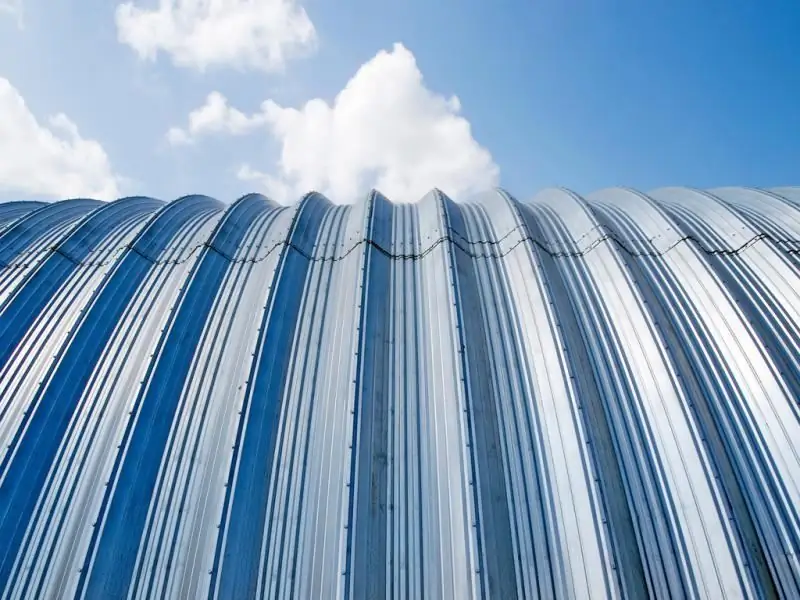
How the hangar roof shape depends on its function. The better to insulate the hangar roof. DIY hangar roof assembly instructions
How To Make A Roof For A Bathhouse, Including With Your Own Hands, As Well As The Features Of Its Design And Installation
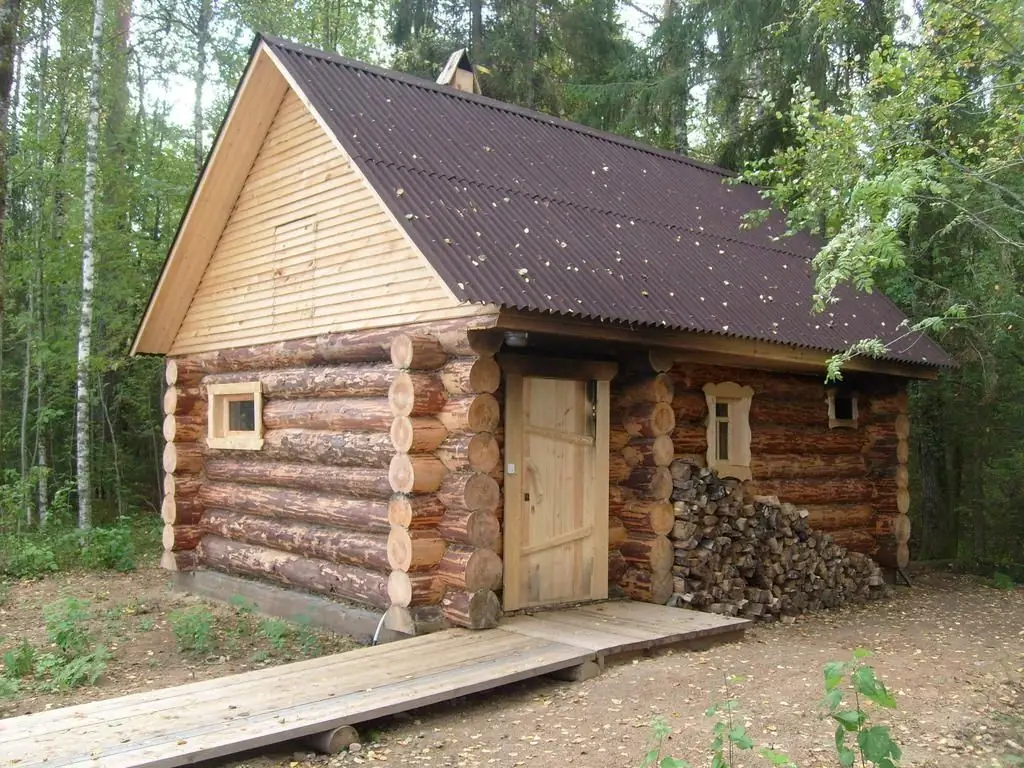
Types of roofs in baths and features of their design. The choice of materials for this design. Roof construction for a bath. Bath roofing repair
Shed Roof For A Garage, How To Do It Right, Including With Your Own Hands, As Well As The Features Of Its Device And Installation
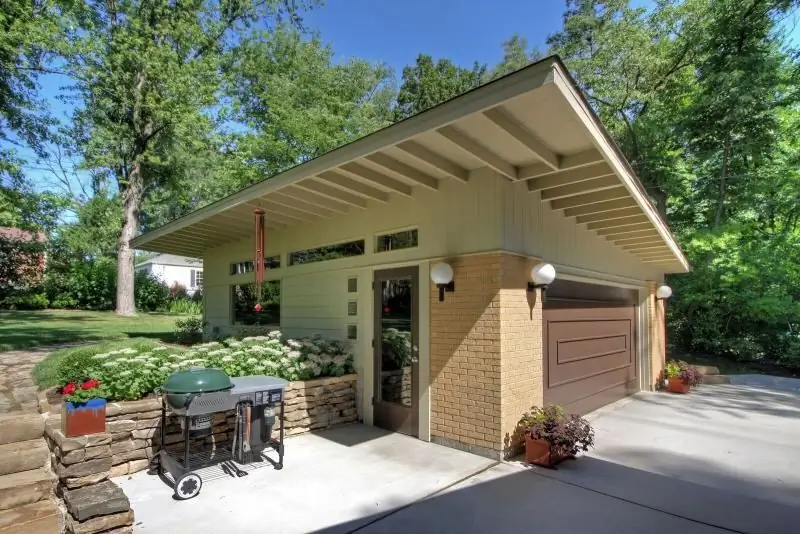
Existing types of pitched roofs. Features of creating and maintaining such a structure in their own hands. What tools and materials you need to have
Installation Of Roof Windows, Including With Your Own Hands, As Well As Installation Features In An Already Finished Roof
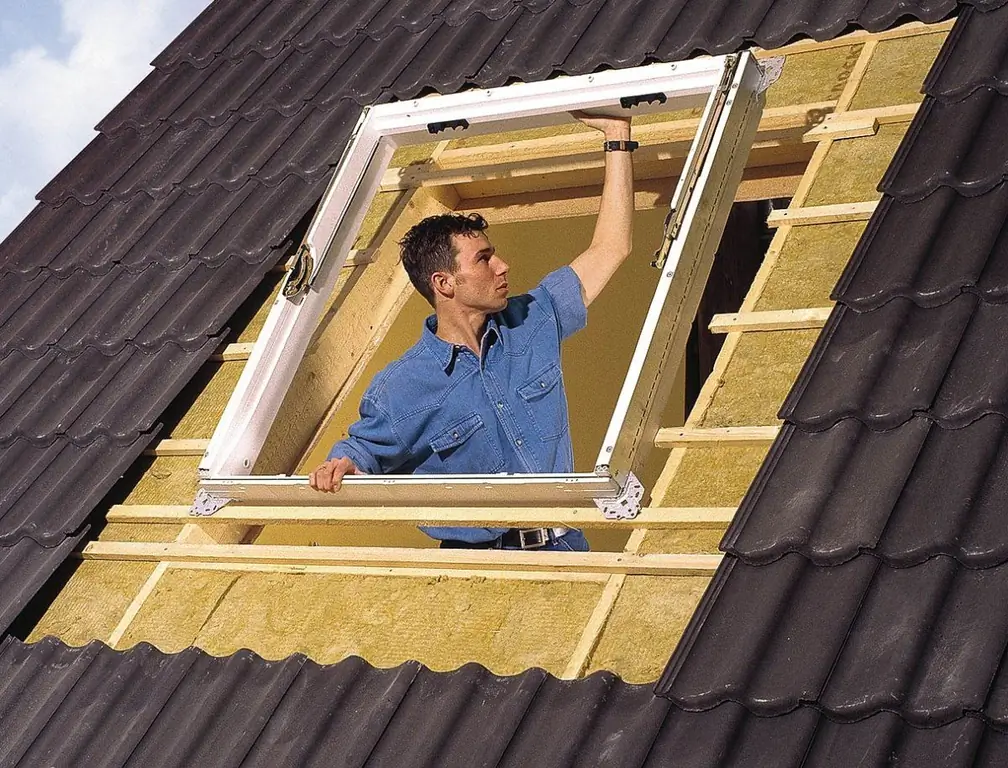
Step by step instructions for installing a roof window. Features of technology and nuances of installation in various types of roofing
How To Install Roof Eaves, Including With Your Own Hands, As Well As The Features Of The Repair
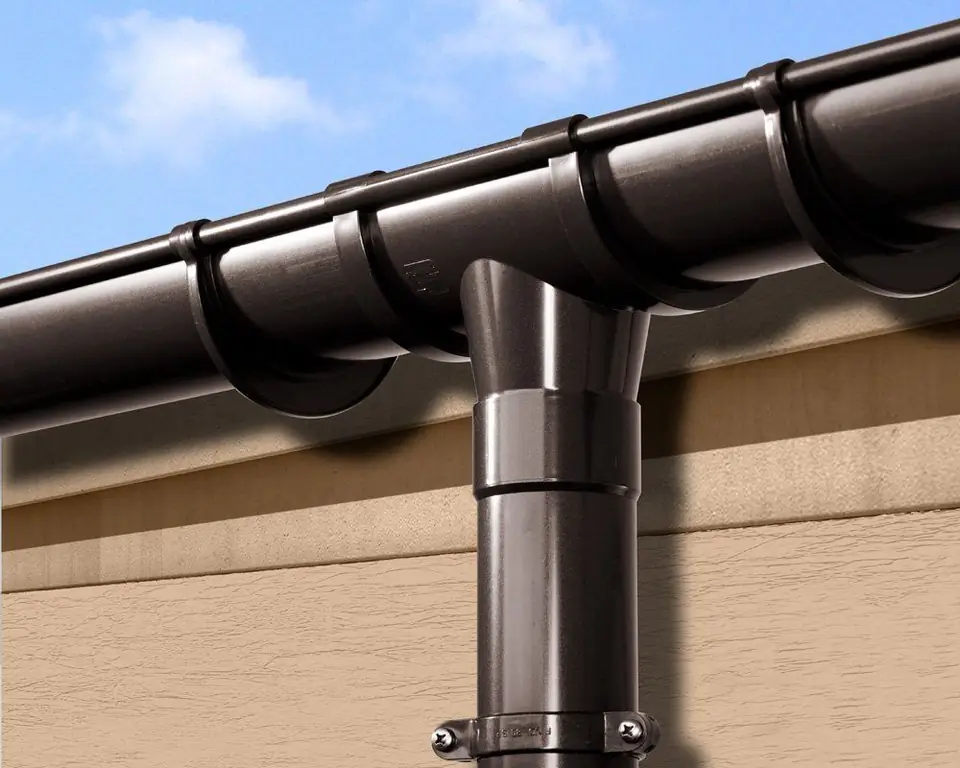
The design and purpose of the ebb and how to install it on roofs with different coatings. Installation of ebb tides in various situations and their repair
